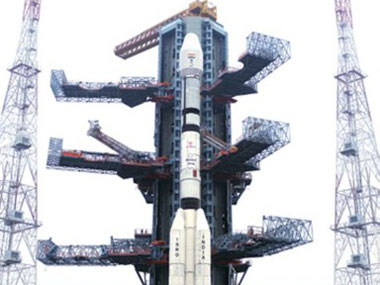Hyderabad:
The ICBM test-fired from the Interim Test Range (ITR), Balasore, Orissa on April 19 was on target 5,000-km into the Indian Ocean. The missile’s accuracy, which hit within double-digit metres of the target, pleased the defence scientists.
“Advanced countries with a superior technology have reportedly achieved accuracy within three-digit metres but Agni-V has achieved what no other country could do before,” a senior DRDO scientist said.
The villagers of Mahimalore in Atmakur mandal of Nellore district have joined the country-wide celebrations of the success, because their boy has made India proud by developing a navigation system that helped Agni-V reach its target.
Soon after the Agni-V test-firing, flexis and posters of Gundra Satheesh Reddy, associate director and outstanding scientist, Research Centre Imarat, appeared in his hometown hailing his achievement. Such honours are generally reserved for filmstars but what Satheesh Reddy and his team achieved was not of the filmi variety but real and rare.
As technology director (Navigation) for Agni-V, Satheesh Reddy provided a navigation system which had very high level reliability. The Ring Laser Gyro-based Navigation System (RINS) and the Micro Navigation System ensured that the missile could simply not fail.
“Em Debba kottinaranna (What a shot that was, brother),” callers from Mahimalore and Atmakur said appreciating Satheesh Reddy after the ICBM’s successful launch. They may not know much about the missile but they knew one thing: Gundra Sitarami Reddy and Rangamma’s son had done the country proud. The agricultural family had dreamt of Satheesh Reddy becoming an engineer and he realised not just that but a dream of the country to get into the ICBM club.
“Perhaps because of my village background, I developed a fascination for aeroplanes and during the course of time got into missile technology,” Satheesh Reddy told STOI. When the DRDO job came his way, he lapped it up. “It was not like any other job right from the beginning. I wanted to do something for the country,” Satheesh Reddy said. That was the reason why he stayed on in DRDO while most of his friends left the country for greener pastures. Quite of few of those who joined DRDO along with him may have left the job and gone for what they felt were better opportunities, he decided to stay and be faithful to his calling.
Satheesh Reddy has been involved in the navigation system of all the missiles developed by DRDO and the ‘Outstanding Scientist’ that he is now, has set his sights on achieving something much higher in the missile technology – all for the country’s sake.
source: http://www.timesofindia.indiatimes.com / Home> City> Hyderabad / TNN / April 29th, 2012


